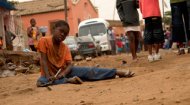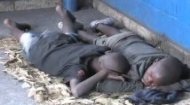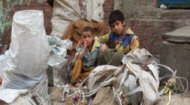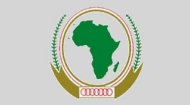|
Street Children in Africa |
Street Children in Africa |
Street Children in Africa | Street Children in Africa |
About street children in Congo Brazzaville in facts, figures and video together with details of projects and programs supporting them.
More >
About street children in Madagascar in facts, figures and video together with details of projects and programs supporting them.
More >
About street children in Senegal in facts, figures and video together with details of projects and programs supporting them.
More >
About the lives and challenges the children of Africa face in a series of articles and videos.
More >
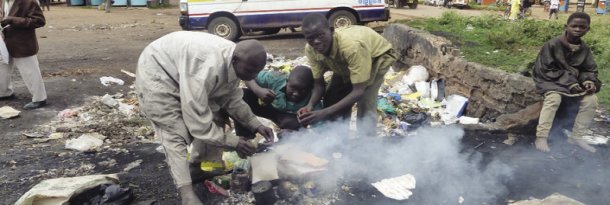
|
This despite, street children in Africa, like all children on the continent, technically being protected by the provisions of the African Charter on the Rights and Welfare of the Child (above), also known as ACRWC or the Children's Charter. It came into force in 1999 and amongst its provisions is Article 25, which states "Any child who is permanently or temporarily deprived of his family environment for any reason shall be entitled to special protection and assistance." It also guarantees all children the inherent right to life, education and health and the right to be protected from all forms of economic exploitation. Despite the enormity of the challenge, dedicated non-governmental organisations (NGOs), charities, and faith-based groups are implementing critical interventions. These efforts generally fall into three categories: (1) Immediate Relief and Harm Reduction: This includes mobile outreach programs that provide basic necessities - food, first aid, clothing, and simple sanitation kits - directly on the streets. Drop-in centres offer a temporary safe haven, allowing children a few hours of respite from danger, often coupled with counselling services. (2) Transitional Shelters and Rehabilitation: Structured residential programs aim to provide a stable, safe environment. These centres focus on physical and psychological healing, offering intensive trauma counselling, basic literacy programs, and skill development (such as tailoring or carpentry) to prepare them for eventual economic independence. (3) Family Tracing and Reintegration: The ultimate goal is safe reunification with biological or extended families. This process requires extensive social work, family counselling, and, critically, economic support for the receiving family, ensuring that the circumstances that led to the child leaving home are mitigated. Without sustained support, reintegration efforts often fail, and the child returns to the street. While non-profits provide essential frontline support, many believe ending the crisis requires a fundamental shift from reactive intervention to proactive prevention and protection, including governments prioritising comprehensive social protection policies, including establishing universal basic income initiatives or targeted cash transfer programs for the poorest households to reduce the economic pressure that pushes children onto the streets. Investing heavily in quality, accessible primary and secondary education, especially in informal settlements, is also seen as crucial, providing a powerful protective measure against street life as is investing in urban youth-friendly infrastructure, trauma-informed care facilities, and vocational training centres run by government agencies, ensuring sustained funding and scalability that NGOs often cannot achieve alone. Here are some recent street children in Africa statistics: A study in Ethiopia found that street children normally worked 2-3 hours a day on the streets both before and after school. Most children in Ethiopia start working the streets at around 10yrs old. There are approximately one million children in Cairo who are either on the streets or are at risk of being on the streets. 82% of these children cite abuse at home for their circumstances. 30% of these children reported that they took drugs to relieve pain, hunger and violence. There are a reported third of a million children living on the streets of Kenya with girls often forced into prostitution earning just 30p for each client. Over 95% of street children in Akwa Ibom State in Nigeria have been stigmatised as child witches and abandoned by their parents and forced to live on the streets. In South Africa most street children are aged between 13-14yrs and state they end up on the streets because of family poverty, overcrowding, abuse, neglect, family disintegration and HIV/AIDS. Above are support projects working with street children in most countries of Africa, which delve into more details about the challenges and dangers these children face. |
